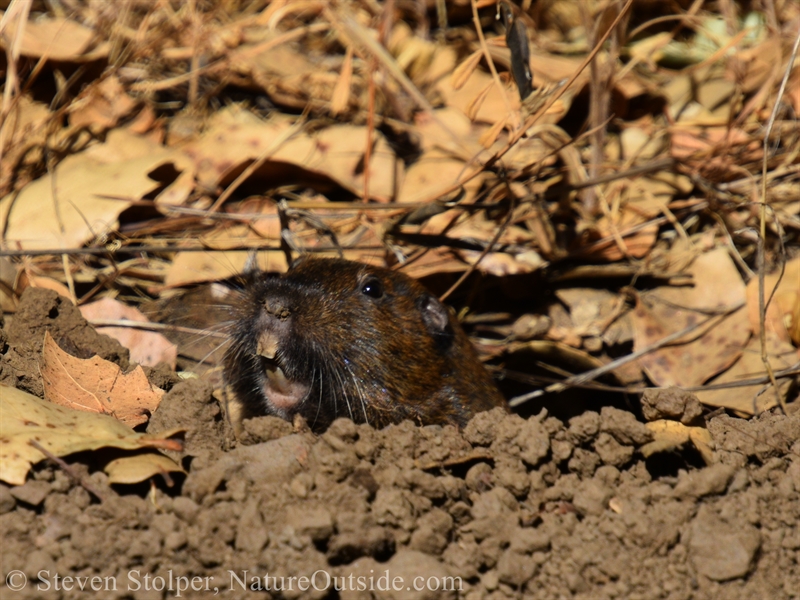
It’s a great morning for a hike! As I strike out along the wide dirt trail, the May sun floods the hillside with the early morning light. I plan a short hike from a hillside meadow down to a creek that runs along the valley floor.
I reach a hilltop shaded by enormous oaks. Looking across a small valley, I can see a cluster of vineyards that make northern California a paradise for wine connoisseurs.
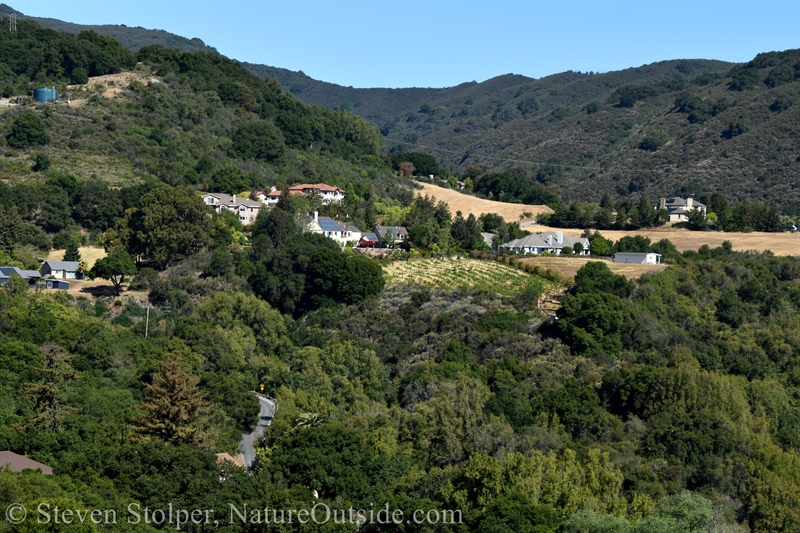
Vineyards and wineries
I walk further and encounter wild turkey, who regard me curiously in the early hour. Turkey are not native to California. There was a turkey species that lived in California 10,000 – 12,000 years ago. We know this from fossils found in the La Brea Tar Pits in Los Angeles. But Wild Turkey were extinct until the California Fish and Game Commission introduced thousands of farm-raised turkeys into the wild starting in the early 1900s, up until the 1950s. Recently, the turkey population has exploded. And it is now quite common to see them.
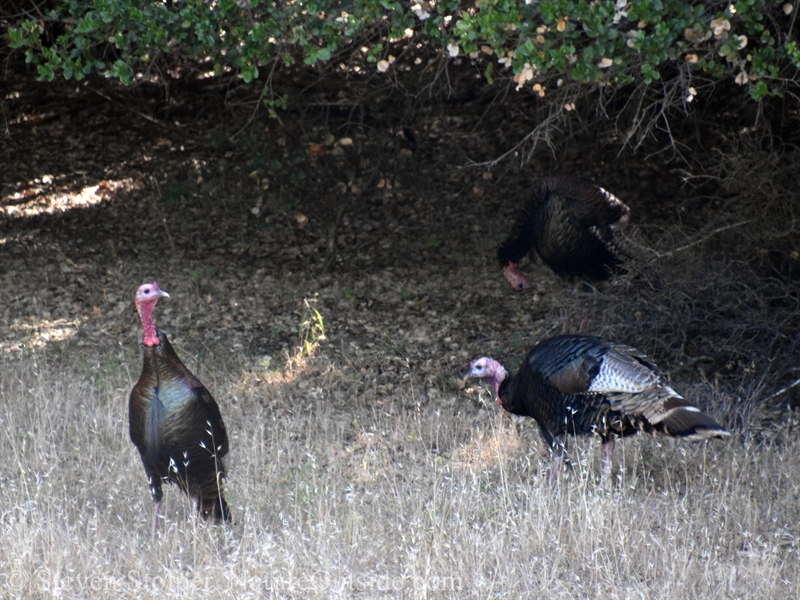
Wild turkey
I continue my hike in silence, trying to create as little disturbance as possible. I’m rewarded as I catch a mother Columbian Black-tailed Deer leading her two fawns into cover.
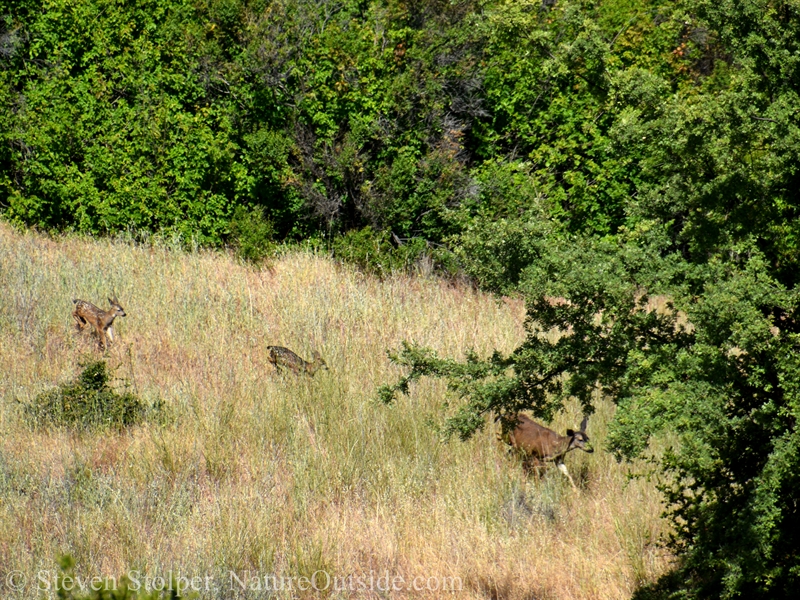
A mother leads her two fawns toward cover to wait-out the day
They are forced to cross an open area – a fire break. The mother emerges from the shade of a large oak to dart across the open space. The two fawns follow her into the safety of dense scrub. The fawns still have their spots, they can’t be more than four-weeks old.
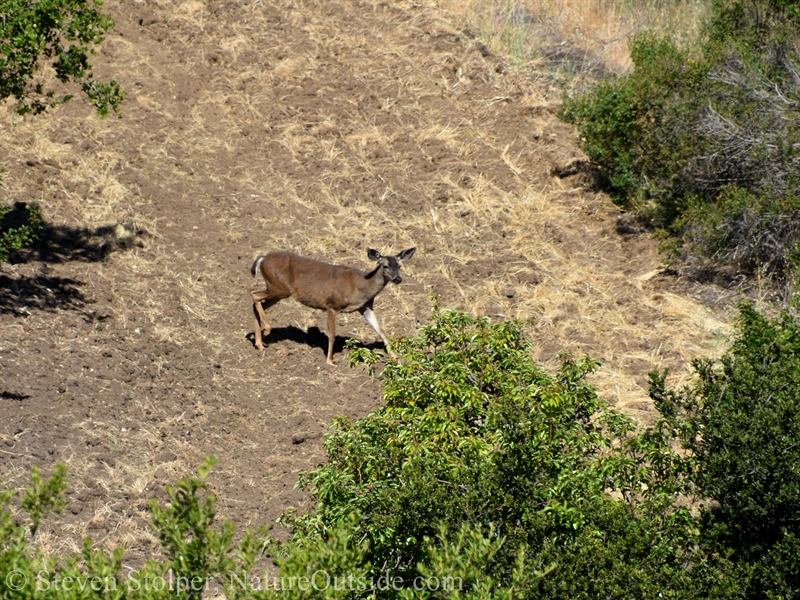
Mother darts across the open space
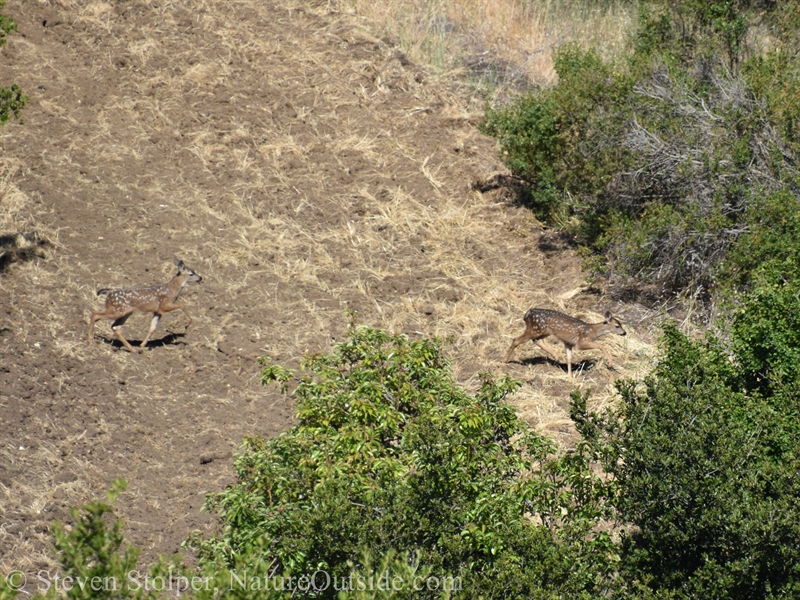
Her two fawns follow her into cover to wait out the day.
I surprise a male yearling, experiencing its second year of life. Its velvet covered antlers are just beginning to erupt from its head.
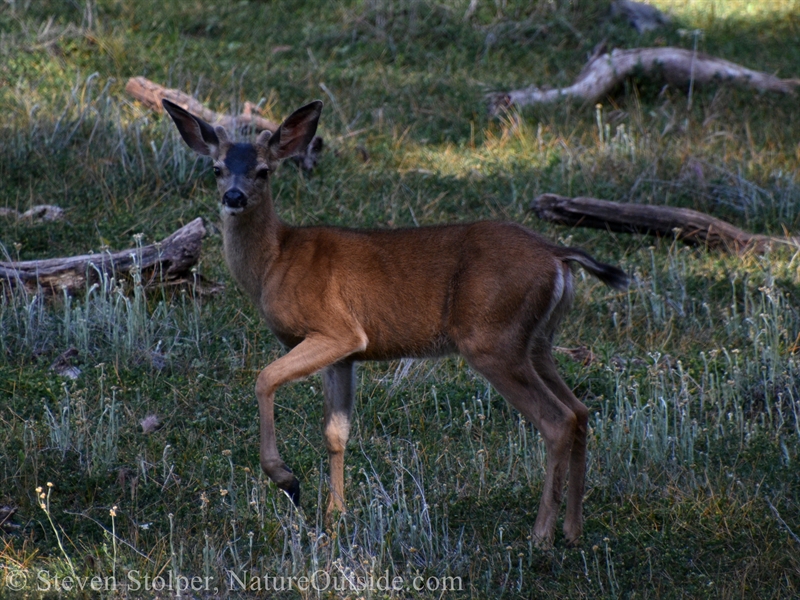
Male yearling beginning to grow antlers
Holey Gopher!
As I saunter along, movement catches my eye along the edge of the trail. It’s low, on the ground, and I search futilely for the source. I creep up on the location and find an unassuming hole in the ground. Can you see it?
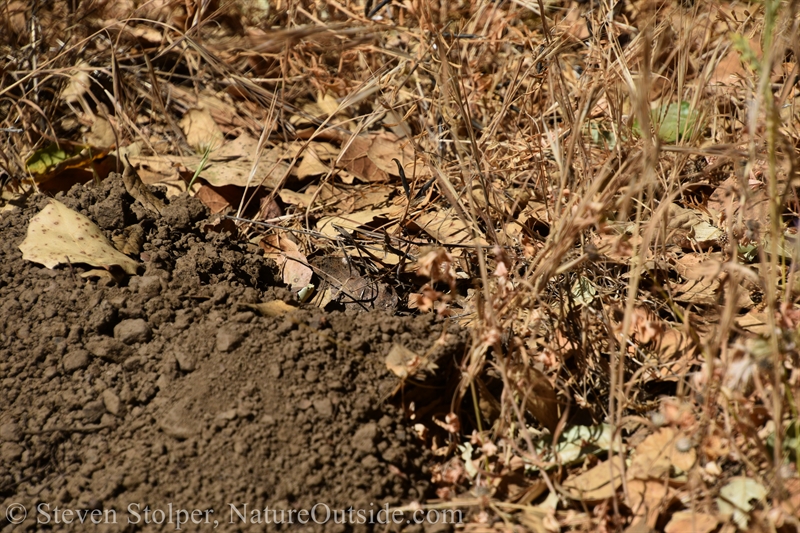
The hole is difficult to see, but fresh “throw” (the dirt from excavation) surrounds it.
Outside the hole, I see recently excavated dirt. There is fresh “throw” beside it. Throw is the term for dirt excavated from a hole by an animal. It is usually spread across the ground in a characteristic pattern. I inspect the amount of dirt, its consistency, and its pattern of dispersal. I believe this hole is made by a Botta’s pocket gopher.
As if to confirm my conclusion a head pokes out of the hole. It is a Botta’s pocket gopher!
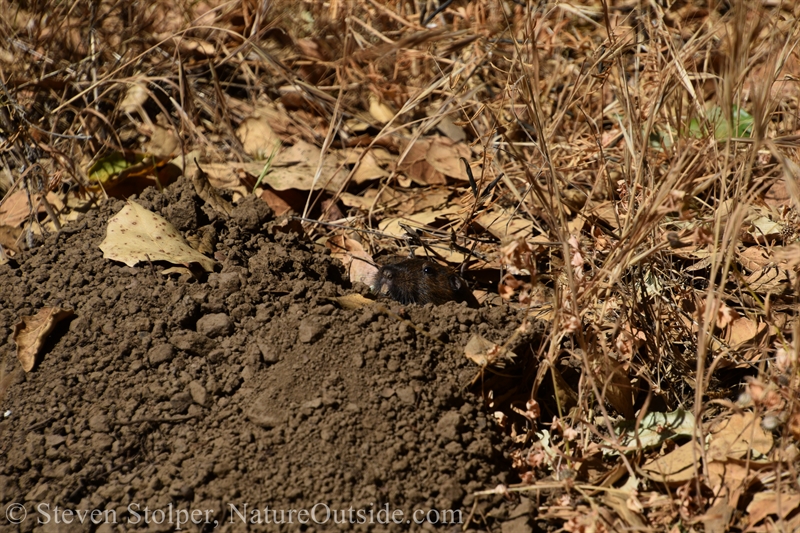
A Botta’s pocket gopher sticks its head out of a hole.
Botta’s Pocket Gopher
There are five species of pocket gophers found in California. The Botta’s is the most widespread1. They’re named after naturalist Paul-Emile Botta, who first collected these animals in California between the 1820’s and 1830’s2.
It’s thought that French settlers may have named gophers, using a word for honeycomb or waffle (gaufre). Gophers would have been new animals to Europeans and their tunnels “honeycomb” the ground and the surface mounds at the tunnel entrances resemble waffles2.
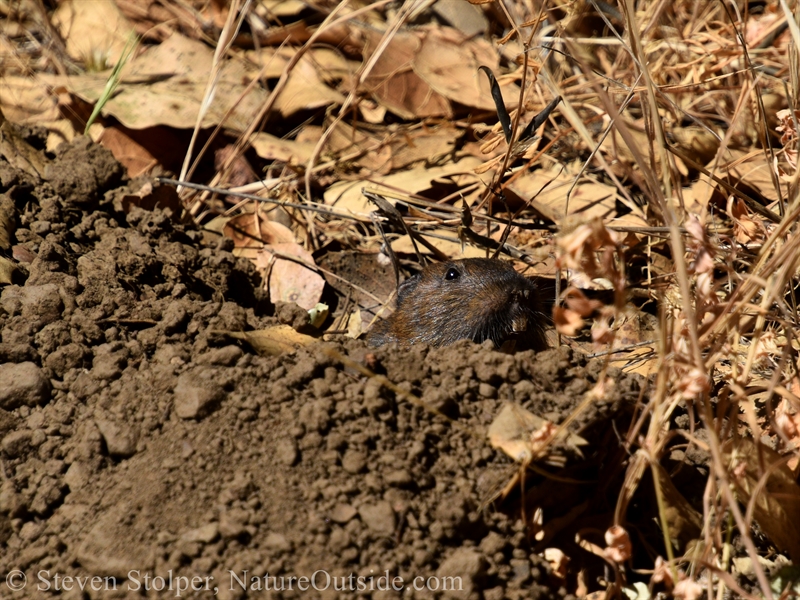
I call this my “Caddyshack” shot because it reminds me of the gopher in the movie.
A pocket gopher is roughly 7 to 10 inches long, including about 2 inches of tail. It’s brown fur closely matches the color of the soil in which it lives.
I remain still and silent as I watch the creature. Gophers don’t have good eyesight. They don’t need it in their underground tunnels. And I know that as long as I move slowly and silently, I can approach quite close to the animal. I saw a bobcat do exactly that to secure a morning meal. And I imitate the bobcat as I slowly approach the tunnel opening.
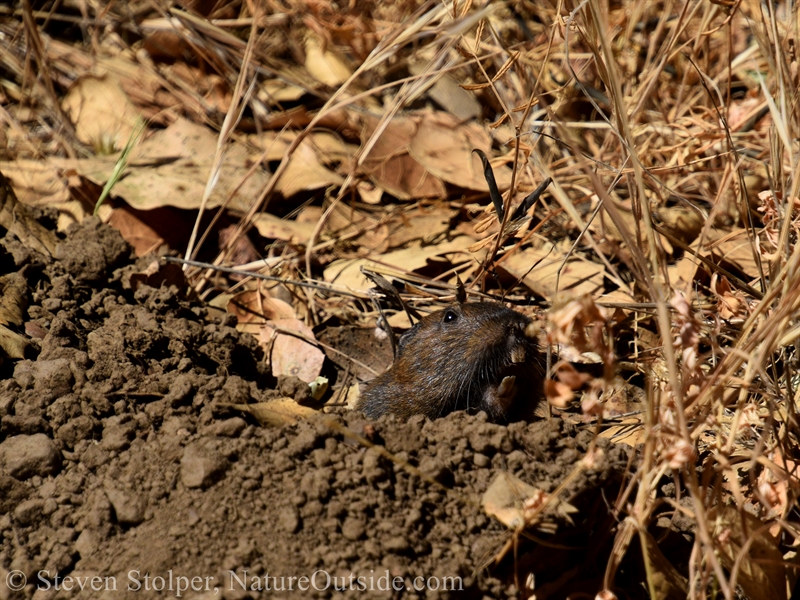
Gophers are funny shaped animals.
These gophers have large cheek pouches that run all the way back to their shoulders. This is why they are called “pocket gophers.” Gophers use the pouches to transport food to caches within their burrows.
Gophers will eat just about any plant. They prefer to eat forbs, but eat roots as well. They will use their sense of smell to find a plant and then tunnel toward it. They’ll clip the roots from below, pull the plant underground, or create a tunnel entrance near the plant. From the entrance, they extend their bodies up to a full body-length outside of their tunnel to harvest the plant. This is the behavior I see now.
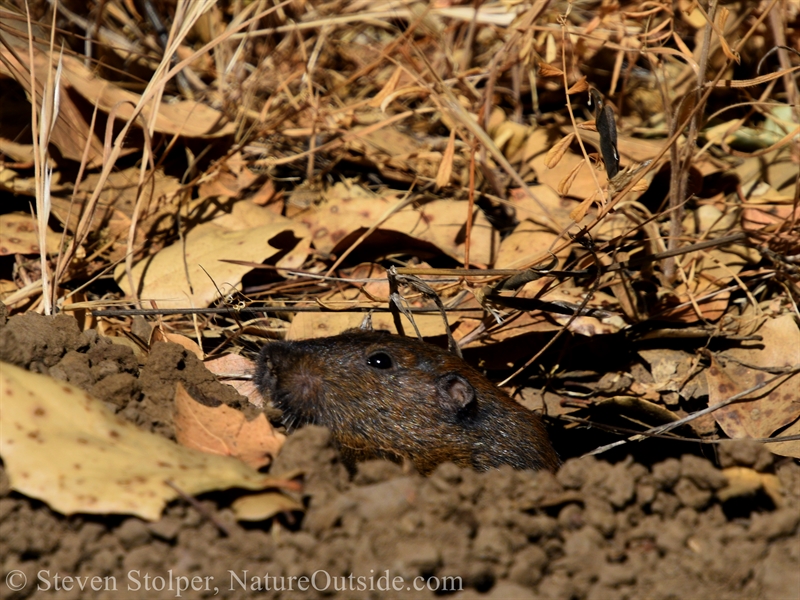
The gopher examines its surroundings.
Gopher tunnel systems can cover as much as 2,000 square feet3. The tunnels themselves are only about three inches in diameter. You can distinguish the tunnel entrances from other animals because they are covered by earth mounds that have a “plug” toward one side, or in the center, that covers the tunnel entrance3.
Within their subterranean lair, gophers have feeding chambers, resting chambers, and latrines. These chambers can be up to six feet below the surface. They dig using both their claws and teeth, pushing soil and debris behind them with their hind feet. They can then do a somersault inside the tunnel and push the material out of the burrow with their forefeet and chest. I never thought of a gopher as a gymnast!
Pocket gophers rarely live longer than three years. But an adult can produce many young each year. The young live with their mother and then disperse. Adult gophers are territorial and solitary, except during breeding season.
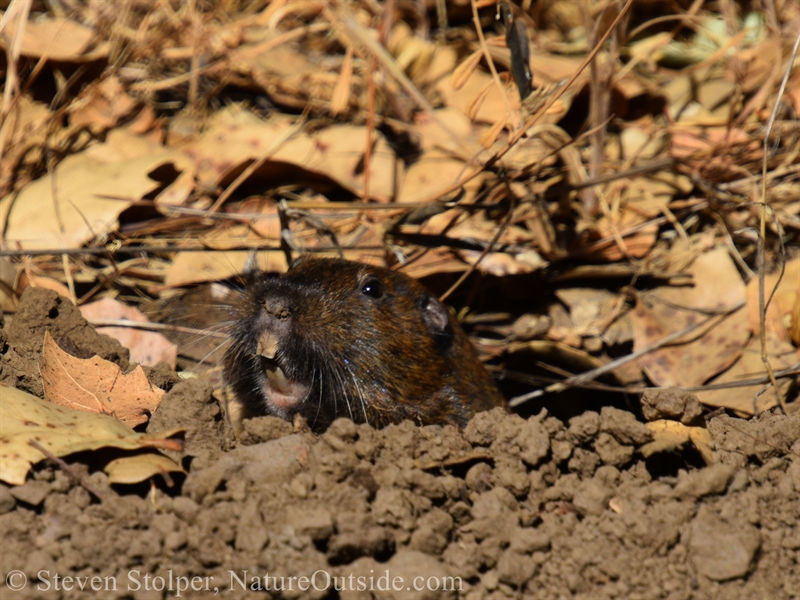
Gopher teeth grow continuously and are worn down by constant digging.
Gophers are on the menu for hawks, owls, coyotes, foxes, and bobcats. They are also eaten by skunks, rattlesnakes, and gopher snakes. Badgers and some weasels will also eat gophers.
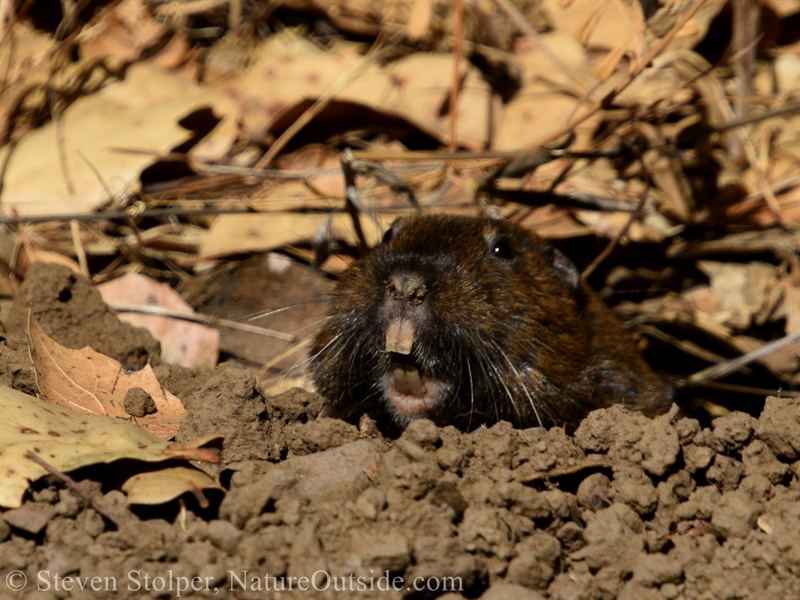
In natural settings, gophers mix and aerate the soil. By bringing deeper layers of soil to the surface, they make soil minerals available to plants. So gopher activity increases soil fertility. They also aerate the soil, which promotes plant growth. However, this activity makes them a pest (to say the least) in agricultural areas and to many homeowners who want a pristine green lawn.
To The Creek and Back
I leave the gopher to do its work and head down to the creek to have a late breakfast.
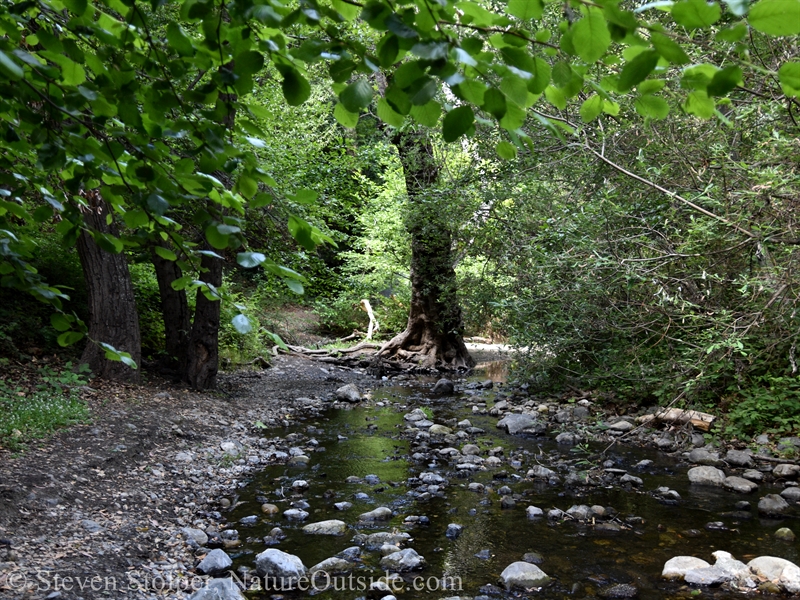
On my way back to the trailhead, I pass the spot where I saw the gopher. The tunnel is plugged and the gopher has moved on.
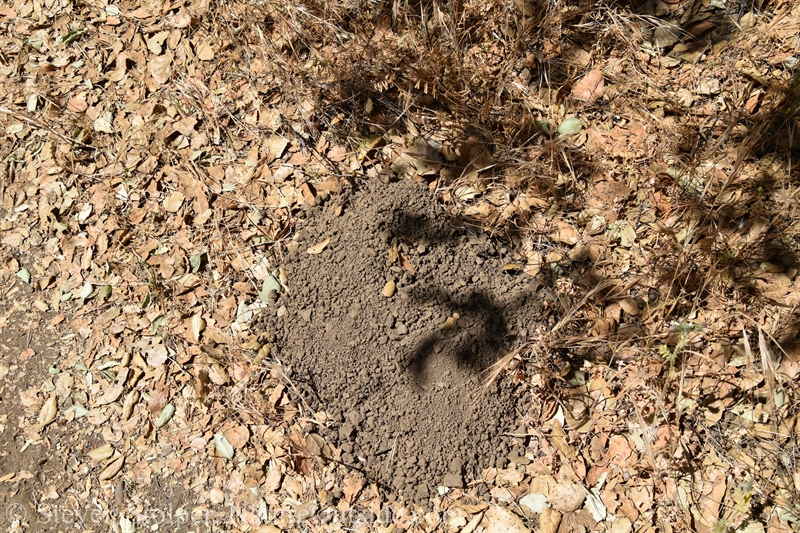
The gopher plugged the tunnel.
References
2. Botta’s Pocket Gopher or Valley Pocket Gopher
3. Mammals of the Pacific States: California, Oregon, Washington 1st Edition
Related Articles on NatureOutside
Urban Creatures –Turkey Vulture
For fun facts and useful tips, join the free Bushcraft Newsletter.



Leave a Comment